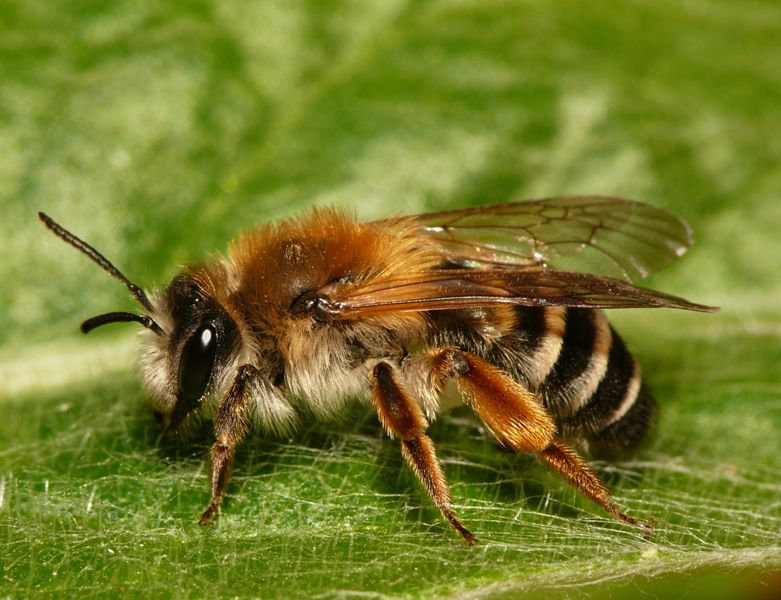In April 2021 Chris Bentley, who works at Rye Harbour Nature Reserve, found a very special bee which brought excitement to many people in the bee world. Outside the allotment at Rock Channel, Chris discovered the White-bellied Mining Bee (Andrena gravida) on the green verge outside near the houses. He is an authority on invertebrates, especially flies and bees. He must have a good eye to have spotted them as they are tiny.
This particular bee is very rare and only found in the eastern half of East Sussex and in Kent – and nowhere else in England – and they are not aggressive, their sting will not break skin, and they are very important pollinators of fruit trees, of which there are quite a few on the allotment site.
An observer group of human beings, lying on their stomachs, were watching the male bees (about 40) patrolling low above the lawn and flower beds chasing away any possible rivals, and they reported that they saw four females emerge from their burrows. Once they had mated, each female tunnels vertically down into the grass and other suitable areas creating small side chambers.
The female will then leave in each chamber a ball of pollen mixed with some nectar, lays her eggs on to this ‘loaf’ and it maybe possible for the female to lay about ten eggs before she dies. When the egg hatches, the tiny larvae will feed on the ‘loaf’ before developing into next year’s generation of white-bellied mining bees.
As James Brown of the observing group said: “You [Rye] have a very rare bee literally on your doorstep and it would be wonderful if whoever is responsible for the grass verge, can manage it with this in mind. Nothing much needs to change. It can still be mowed gently, but please don’t spray off/dig out the wildflowers growing on the lawn. Dandelions are a particular important source of nectar for bees as it gives them the energy to fly and is mixed with pollen for the development of their larvae”.
Source: James Brown
Image Credits: Dick Belgers https://nl.wikipedia.org/wiki/Weidebij#/media/Bestand:Andrena_gravida_f.jpg CC BY 3.0 https://creativecommons.org/licenses/by/3.0.



